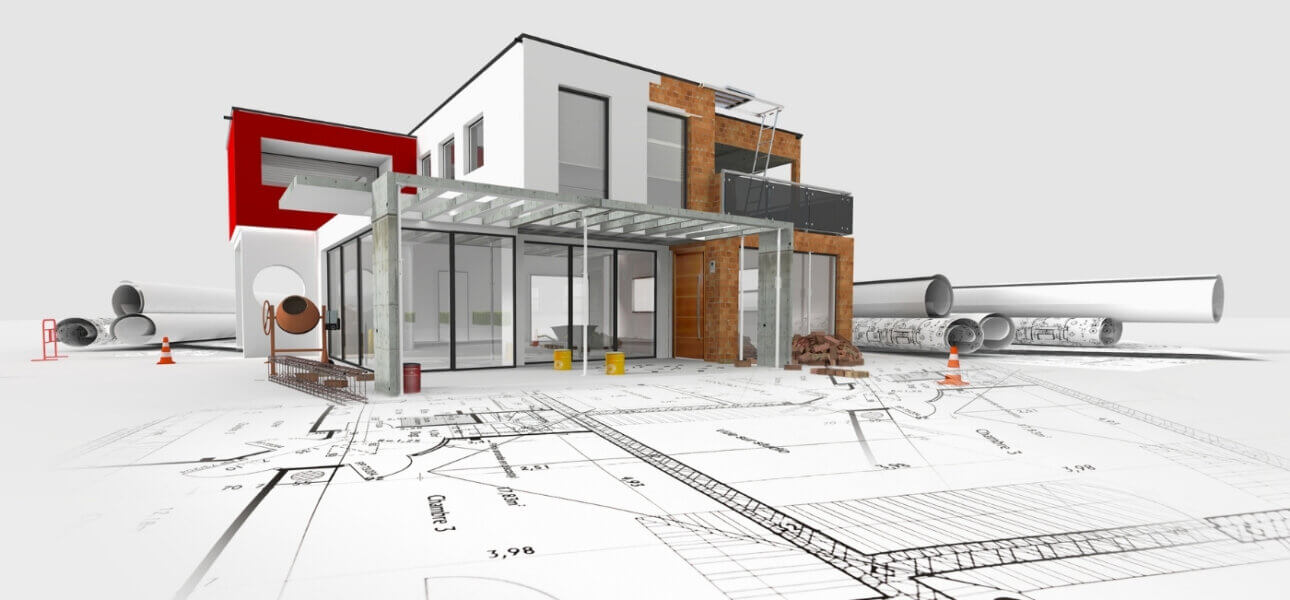A beautiful home deserves a landscape that feels natural and a driveway that works hard without cracking in the first monsoon. After handover, many Chennai buyers rush the final finishes. Slow down a bit. A smart plan for landscape and paving saves money, protects your structure, and sets the tone for everyday living.

Ready to make your Padappai plot green, cool and low maintenance without wasting water or time Let’s turn that bare site into a calm, functional outdoor space that grows in value.
First things first: understand your site
Before you order pavers or plants, take a day to observe the plot.
- Check sun path. In Chennai, the south and west get the strongest heat. Plan shade or tall greens on these sides.
- Note slopes and water flow. Where does rainwater collect during a shower
- Identify soil type. Many plots in Padappai have red soil with mixed gravel that drains fast.
- Map services. Mark your water line, borewell, septic tank, rainwater recharge pit, electrical path and any future grey water line.
Keep all outdoor decisions aligned with your building approvals, setbacks and DTCP or RERA norms for the layout. If you are inside Velammal Garden, ask the team for any community guidelines at velammalgarden.com.
A simple sequence that works
Think in layers and order of work. This avoids rework and broken pavers later.
- Drainage and rainwater harvesting
- Hardscape routing
- Soil improvement
- Irrigation and sleeves
- Paving installation
- Planting and mulching
- Outdoor lighting and furniture
Drainage first, always
Chennai seasons bring intense bursts of rain. Get stormwater out fast and into the ground safely.
- Provide gentle slopes away from the plinth at one to two percent.
- Connect roof downpipes to a recharge pit. Add a silt trap before the pit.
- Create shallow swales that guide water to a rain garden.
- Use perforated pipes wrapped in geotextile where water tends to stagnate.
A dry plinth and quick percolation mean fewer cracks, less damp, and cooler surroundings.
Choosing the right paving for Chennai heat
The goal is to balance durability, comfort underfoot, and easy maintenance.
- Interlocking pavers. Good for driveways. Easy to lift and re-lay if you need to access a pipe. Choose light colours to reduce heat.
- Natural stone. Kadappa, granite, or laterite cobbles give a premium look for sit-outs and pathways. Seal the surface to reduce algae.
- Permeable pavers. Honeycomb or grass pavers help rain soak in. Perfect for overflow parking or side yards.
- Concrete finish. Brushed concrete is budget friendly for utility zones. Add control joints to avoid random cracks.
- Terracotta tiles. Lovely for verandahs and courtyards. Use anti-skid textures and proper bedding to avoid hollows.
Tip. Mix materials by function. Driveway in interlocking pavers. Entry court in natural stone. Garden paths in permeable blocks with gravel infill. You get both elegance and performance.
Subbase and bedding that last
Most paving failures come from weak layers below the surface.
- Excavate soft spots after a heavy watering test.
- Compact well in lifts using a plate compactor.
- Use a graded crushed stone subbase.
- For segmental pavers, add a 25 to 30 millimetre bedding layer of coarse sand.
- For stones, use a mortar bed or a wet mix screed with proper expansion joints.
Edge restraints are essential. A kerb or concealed concrete edge band keeps pavers from drifting over time.
Green planning for low maintenance
Go native and drought tolerant for Chennai. These thrive with less fuss.
- Shade trees. Neem, Pongamia, Indian beech, Peltophorum where space allows.
- Flowering trees. Plumeria adds fragrance near the sit-out.
- Hedges and privacy. Ixora, Clerodendrum, Duranta.
- Colour pops. Bougainvillea, Hibiscus, Nerium along the boundary.
- Groundcovers. Wedelia, Lippia, Dwarf ruellia to keep soil cool.
- Fragrance and kitchen. Tulasi, Curry leaf, Mint, Lemongrass, Chilies in a corner bed.
- Lawn choices. For small patches, Zoysia or Bermuda. Consider steppers through the lawn to reduce wear.
Space trees away from foundations and underground lines. Plan for mature canopy spread, not just the nursery pot size.
Soil improvement that pays back
Healthy soil reduces water bills and plant replacements.
- Mix compost and well rotted manure into topsoil.
- Add cocopeat for moisture holding if your soil drains too fast.
- For sticky clay pockets, incorporate river sand and gypsum.
- Finish with a five to eight centimetre mulch of shredded leaves or coco chips.
Mulch is your silent worker. It keeps roots cool, blocks weeds and feeds the soil life.
Smart irrigation for busy families
Set and forget systems are ideal for working households in the Oragadam belt.
- Drip lines for trees, hedges and shrub beds.
- Micro sprinklers for lawn pockets and groundcovers.
- A simple battery timer or an app based controller with rain skip.
- Use treated grey water for non edible plants wherever possible.
A weekly deep watering is better than daily surface sprays. It drives roots deeper and builds resilience.
Outdoor zones that match daily life
Think about how your family will actually use the space.
- Entry court. A welcoming, clean zone with a small water bowl or planter and a non slip paved area.
- Sit out. Morning tea corner facing the east, shaded by a pergola or tree.
- Utility strip. Washing, drying, and storage tucked on the north or service side with brushed concrete and a screen.
- Kids pocket. A small lawn or sand pit with soft edges.
- Kitchen garden. Raised beds near the back door for easy harvest.
- Pet run. Gravel or grass pavers for drainage and easy cleaning.
When each activity has a defined spot, clutter vanishes and the home feels larger.
Lighting, safety and privacy
Outdoor lighting doubles as security and ambience.
- Path bollards at knee height for glare free guidance.
- Up lights for feature trees and the name wall.
- Motion sensor lights near gates and utility zones.
- Warm white tones for a cosy look.
- Screens of bamboo, wooden slats, or dense hedges where you face a neighbour window.
Plan conduits before paving so there is no chasing later.
A realistic timeline after handover
- Week 1. Site study, measurements, marking services, drainage layout.
- Week 2. Earthworks, recharge pit, swales, subbase preparation.
- Week 3. Edge restraints, paving of primary routes, utility strip.
- Week 4. Soil improvement, irrigation sleeves, planting.
- Week 5. Secondary paving details, lawn, mulch, lighting and final clean.
For larger plots, run paving and planting as overlapping tasks to save time.
Maintenance that keeps it fresh
- Sweep and wash pavers occasionally. Avoid harsh acids.
- Re sand interlocking joints once a year if needed.
- Prune lightly after flowering to keep shape.
- Top up mulch every six months.
- Fertilise with compost tea at season change.
- Desilt rain pits before monsoon.
A one hour monthly routine is enough for most Padappai villa plots.
Budgeting without surprises
Allocate your spend in a practical split.
- Drainage and groundworks. Twenty to twenty five percent.
- Paving and edges. Thirty to forty percent, depending on material.
- Soil, plants, irrigation. Twenty to twenty five percent.
- Lighting and furniture. Ten to fifteen percent.
- Contingency. Five percent for site surprises.
If you are choosing between cost and look, invest in subbase and drainage first. You can always upgrade finishes later.
Why Velammal Garden makes it easier
Wide internal roads, planned stormwater systems and defined utility corridors reduce the chance of rework. You also get guidance on front garden aesthetics so the entire street looks harmonious. For layout level updates and homeowner tips, check velammalgarden.com.
Quick checklist to close faster
- As built map of services
- Drainage slopes confirmed
- Edge restraints completed
- Paver delivery and storage on clean pallets
- Plant list with sizes and spacing
- Irrigation plan with zones and timer
- Lighting points and cable routes marked
- Mulch and compost on site before planting
Tick these and you will enjoy a clean, green home from day one.
FAQs: landscape & paving after handover house construction chennai
What is the best paving for a Chennai driveway
Interlocking concrete pavers are a strong, flexible choice for driveways. They manage small ground movements and can be re laid locally if you need to open a pipeline. Light shades keep surface temperatures lower in Chennai heat.
How do I prevent moss or algae on my pavers during monsoon
Ensure proper slope for quick runoff, keep joints well filled, and wash dust before the first rains. For natural stones, apply a breathable sealant. Maintain airflow and sun exposure by avoiding dense groundcovers right next to shaded pavers.
Which plants are low maintenance and heat tolerant for Padappai
Choose natives like Neem, Pongamia, Plumeria, Bougainvillea, Hibiscus, and drought hardy groundcovers like Wedelia and Lippia. Pair with mulch and drip irrigation for consistent performance with minimal watering.
Can I do a lawn on a small villa plot without high water bills
Yes, keep the lawn to a small focal patch and combine with stepping stones. Use Zoysia or Bermuda, improve soil with compost, and water deeply through drip or micro sprinklers. Mulch beds around the lawn to reduce heat.
How soon after handover should I start landscaping
Start planning immediately but execute after your exterior plumbing and electrical are confirmed. Do drainage and subbase first, then paving, then planting. Most homes can complete a neat landscape in four to five weeks if scheduled well.
A thoughtfully built outdoor space protects your investment and elevates daily life. With the right sequence and materials, your Padappai home will stay cool, clean and welcoming through every Chennai season. For community specific guidance and inspiration, visit velammalgarden.com and speak to the on ground team for site wise tips.


